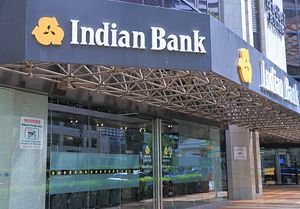Indian Prime Minister Narendra Modi officially announced the launch of a government program on Thursday whose primary objective is to take personal banking services to the poor. He first announced the program during his Independence Day speech on August 15. Currently, about 40 percent of Indians have little or no access to financial services. The program will attempt to fight poverty and hunger by eventually allowing the government to use direct cash transfers to enable India’s poor to purchase goods and services. Historically, the Indian government has attempted to directly provide these goods and services–often unsuccessfully. According to the BBC, “Modi’s government aims to provide bank accounts to 75 million households by 2018, and to have two account-holders per household.”
When launching the program, Modi focused thematically on the idea of economic empowerment. “When a bank account is opened, it’s a step towards joining the economic mainstream,” he declared. He noted a seeming paradox in modern India where “millions of families” have mobile phones “but no bank accounts,” noting that there was an “urgency to this exercise as all other development activities are hindered by this single disability.” Under the new plan, account holders receive a debit card, insurance, and overdraft facilities.
The idea of directly transferring cash to India’s poor instead of attempting to provide services directly was championed by the current governor of the Reserve Bank of India (the central bank in India) Raghuram Rajan. Rajan, an accomplished academic economist, recommended the program as one that would greatly empower India’s poor. Additionally, increasing the buying power of India’s poor would increase demand in the private sector, which would in turn increase competition. By focusing on presumably more efficient cash transfers, the government could further focus on reducing the budget deficit and spending “better” on infrastructure.
Compared to traditional policies focusing on subsidies and direct provision of goods and services, “financial inclusion can do more,” says Rajan. “By liberating the poor and the marginalized from the clutches of the money lender, by providing credit and advice to the entrepreneurial amongst the poor, and by giving household the ability to save and insure against accidents, it can set them on the road to economic independence, thus strengthening the political freedom that good public services will bring,” he adds.
Cash transfers are no panacea for India’s poverty problem. While they do hypothetically increase the autonomy of India’s poor, allowing them to become less reliant on government-provided schemes, they also present substantial risk. In order for government cash transfers to reduce poverty over time, the poor must spend more on food, education, and health care. In some cases, additional spending power could go toward “inessential” consumption–spending that does little to improve the lot of India’s poor. Some quasi-cash transfer plans, such as the Supplemental Nutritional Assistance Program (SNAP, or “food stamp” program) in the United States, restrict spending to only essential items such as food. In the Indian case, the government will monitor spending once the program is launched and attempt to encourage the sort of spending that will reduce poverty in the longer term.
What the cash transfer initiative is designed to address is the massive inefficiency with which the Indian government handled its welfare programs in the past. For example, under the food security program championed by India’s former government, the government would set a high fixed price for grains from farmers, purchase these grains directly, and then redistribute them to the poor at a lower price, making up the difference with a massive subsidy. What Modi’s government is attempting to do by enabling the poor to easily acquire bank accounts is nothing short of a paradigm shift in how India handles the welfare of its poor.

































